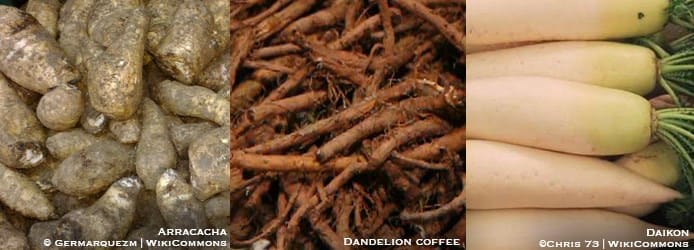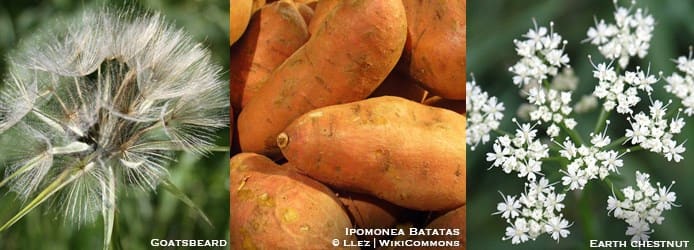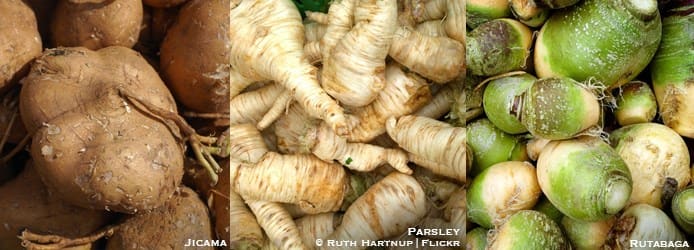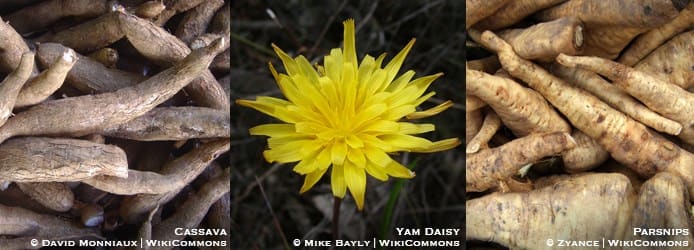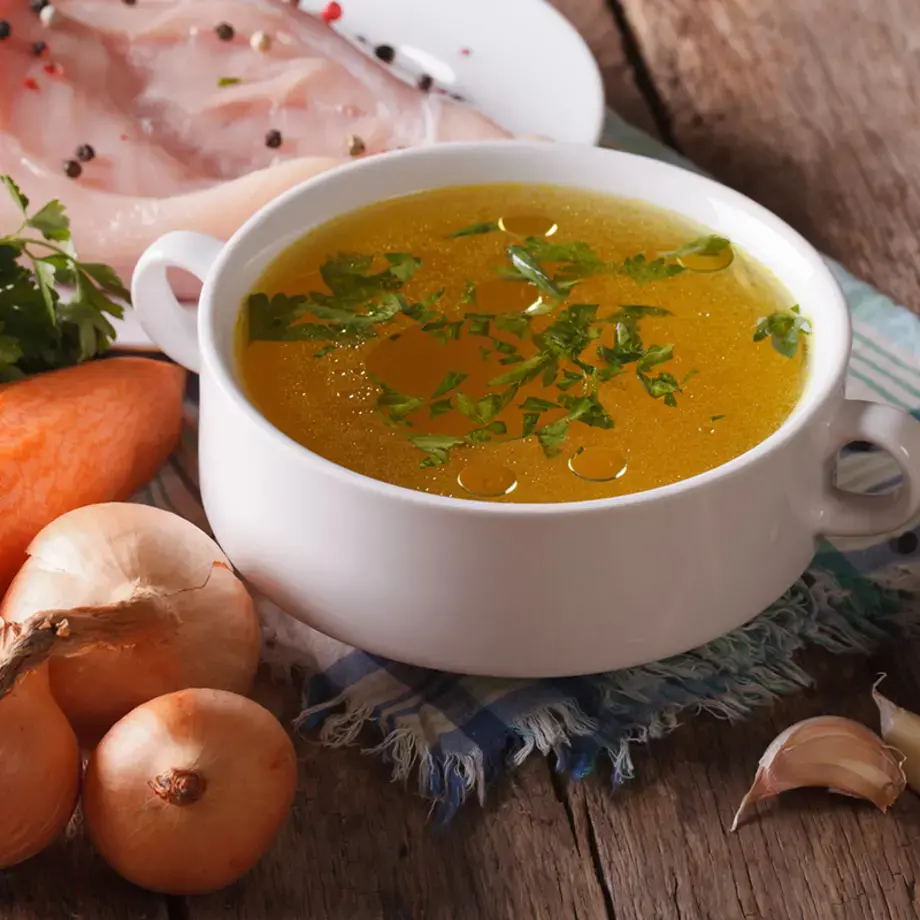Kinpira gobō
This is a typical Japanese dish consisting of burdock root and carrots, julienned and cooked in the 'kimpira' style. Frequently used when cooking roots, this style is more or less 'sauté and simmer, stewing in soy sauce, sake or mirin, sugar, and sesame oil.
Large Indian breadroot
This is one of a variety of names for psoralea esculenta, the prairie turnip. It was a basic food for the native populations of the prairie, and opinions on its flavour range from delicacy to culinary nonentity.
Maca
It's very much in vogue for its multiple properties, from purifying to restorative, and even, some say, aphrodisiac, since it's said to improve the production of sperm and sexual performance. The 'ginseng of the Andes' was regularly consumed by imperial Inca warriors, and the part of the plant with these extraordinary powers is, of course, its root.
Native ginger
Hornstedtia scottiana is a large ginger with exquisite inflorescence, meaty pulp, and a pungent odour. It grows in the rain forests of the Maluku islands, New Guinea, Vanuatu, and Northern Queensland.
Oaxaca
In this Mexican city, 23 December is the 'Night of the Radishes', where a popular art competition is held as part of Christmas celebrations, in which people sculpt giant radishes – weighing up to 3 kg – into religious figures and other objects.
Parsley
The parsley root looks like a beige carrot, and its flavour is a blend of that and celery. Compared to parsnip, it is more delicate, sweet, and has a grassy scent. It is used in Central and Eastern Europe, and is especially popular with Jewish, Polish, and German cooks.
Quotation
Horseradish root is worth its weight in gold. According to Greek mythology, that's what the Oracle at Delphi told Apollo.
Rutabaga
Also called swede, from Swedish turnip, this is probably a cross between cabbage and turnip. Beloved in many English-speaking countries and extremely popular in Northern Europe, where it's prepared in many different ways, including as a purée, it tends instead to be associated with poverty and the two wars in countries like France and Germany.
Salgam
This is 'turnip juice', a beverage prepared in Southern Turkey with the juice of red carrot pickles, salted, spiced, and flavoured with aromatic turnip. It is often served alongside an alcoholic drink and is rumoured to be fantastic after a hangover.
Turnip prize
The turnip – the people's root, noble, praised, mocked, forgotten, rediscovered, always good – has even risen to the level of a top prize. Nailed to a piece of wood, it's the Turnip Prize, coined to satirise the Tate Gallery's Turner Prize, and with typical British derision rewards terrible works of modern art.
Unripe
This is a trend in how to eat kohlrabi, coming from South American cuisine, and Peruvian in particular: the vegetable, still green, tender and flavourful, is eaten both raw and cooked.
Vital
The seventh essential food in the world, and the third most important source of carbohydrates in the tropics: it's yuca (not to be confused with yucca), also known as cassava or manioc, which, when dried and powdered, becomes tapioca.
Wars of the Roses
Tracing back to the beginning of the War of the Roses, we find this recipe from the The Boke of Nurture, from 1460: "Take skirret, parsnips, and apples, and blanch them. Make a dough with flour and eggs. Blend beer, saffron, and salt, and fry them in oil or fat. Serve with almond milk."
Xmas
In some English–speaking countries, the UK and Canada in particular, it's a must at Christmas dinner: parsnips, the long white and meaty root. Native to Eurasia, it's an integral part of the Sunday roast. It's always eaten cooked, but in truth it's also excellent raw.


